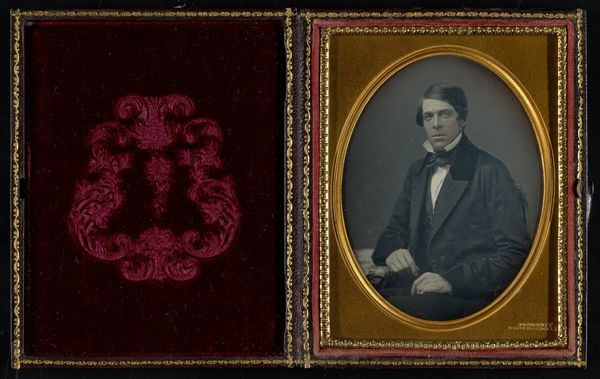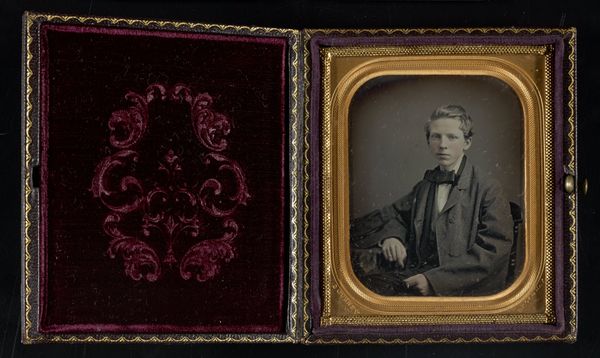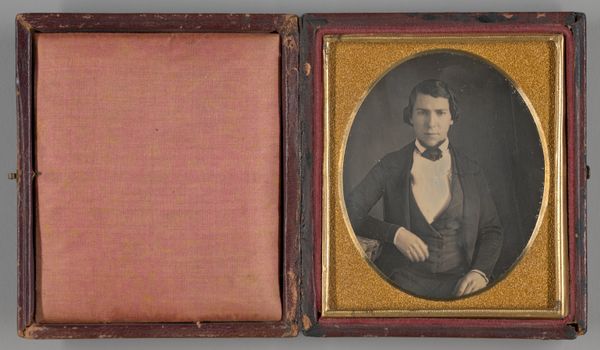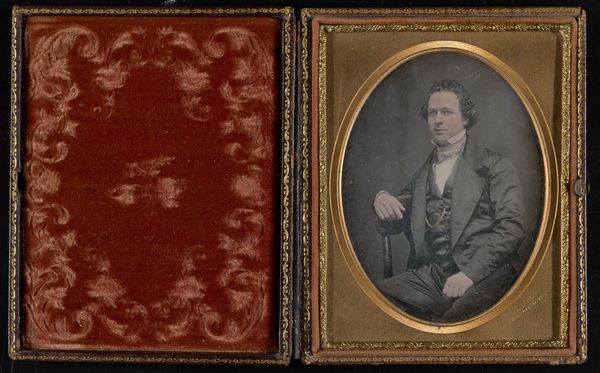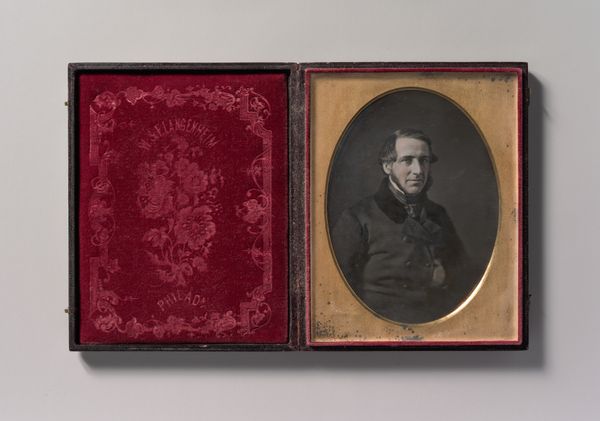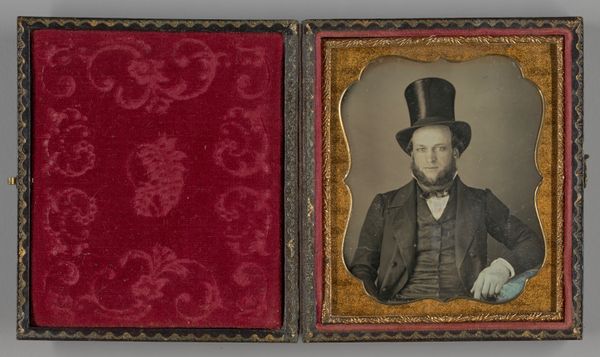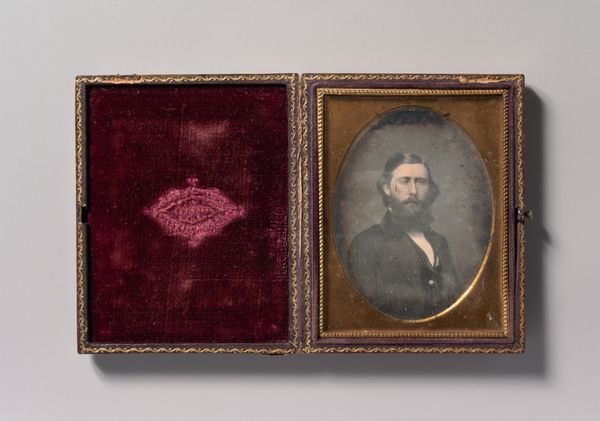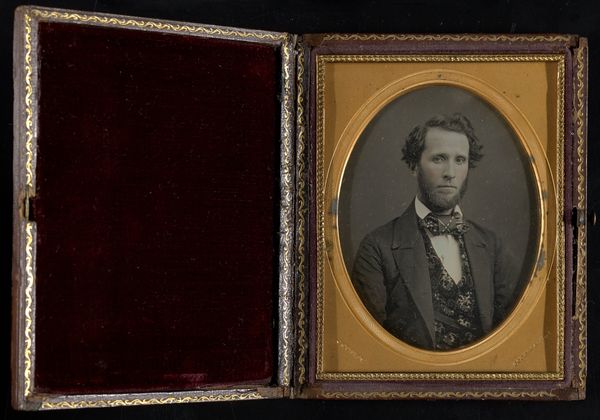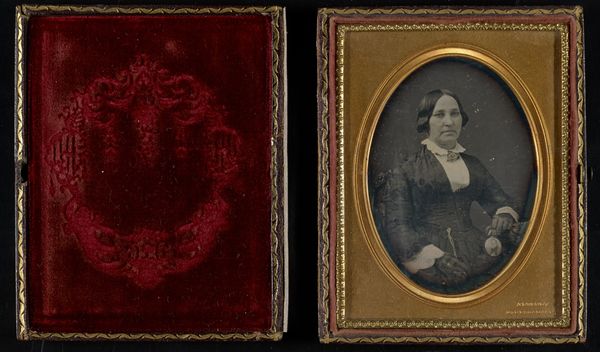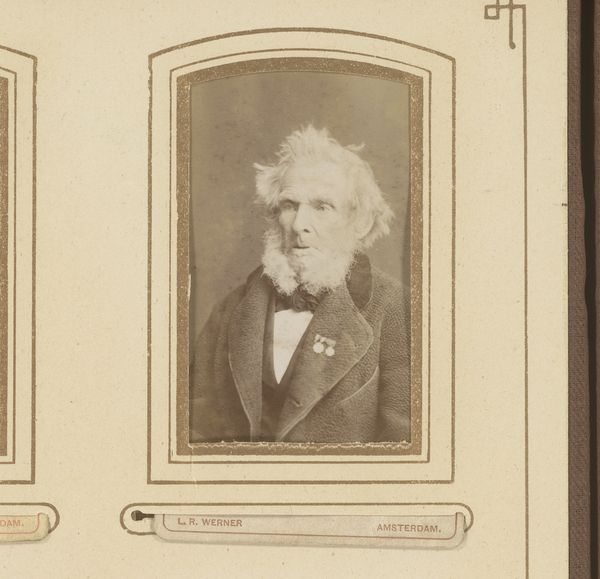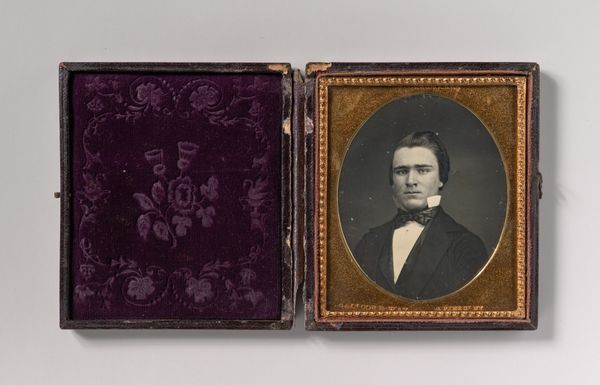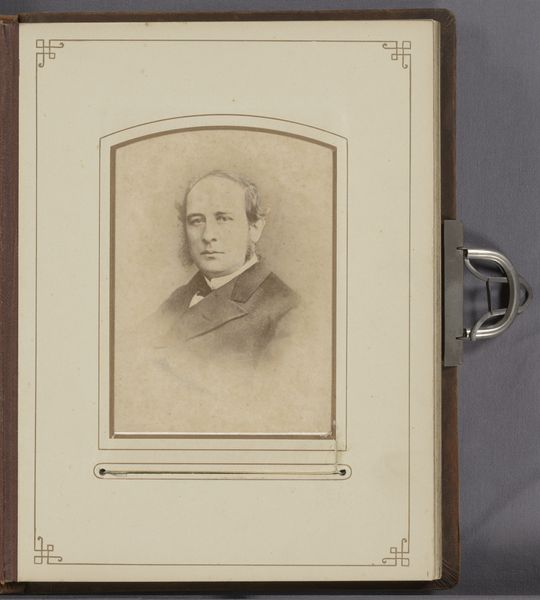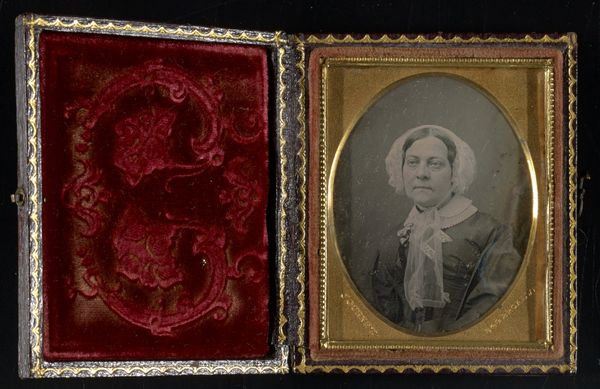
daguerreotype, photography
#
portrait
#
16_19th-century
#
daguerreotype
#
photography
#
realism
Dimensions: height 116 mm, width 85 mm, height 150 mm, width 120 mm, width 240 mm
Copyright: Rijks Museum: Open Domain
Editor: Here we have a daguerreotype, an early photographic process, titled "Portret van een onbekende man," or Portrait of an Unknown Man. It was created sometime between 1845 and 1860 by Jeremiah Gurney. There's a solemn stillness to it; what strikes you most about it? Curator: What immediately stands out is the democratizing power of photography emerging at this time. Before, portraiture was largely reserved for the wealthy elite, reinforcing social hierarchies. Here, though, we see the potential for a more accessible form of representation. I wonder who this unknown man was and what prompted him to commission his likeness. Do you see any clues? Editor: His dress suggests some level of respectability; the suit, though dark, looks well-tailored. Could this be an aspiring middle-class individual eager to claim a place in society? Curator: Precisely! Consider the burgeoning middle class of the 19th century. Photography offered them a novel way to assert their presence, to participate in visual culture in a way previously unimaginable. It's a powerful form of self-definition in a rapidly changing world. Does knowing this alter your initial perception of "stillness"? Editor: It does. Now I see a sense of determined ambition behind the sitter's placid facade. The "stillness" feels like a carefully constructed presentation of self. Thank you, it helps frame my view! Curator: And that’s where the real intrigue of historical analysis lies, isn't it? Revealing how seemingly straightforward images are so entrenched in their cultural context!
Comments
No comments
Be the first to comment and join the conversation on the ultimate creative platform.

